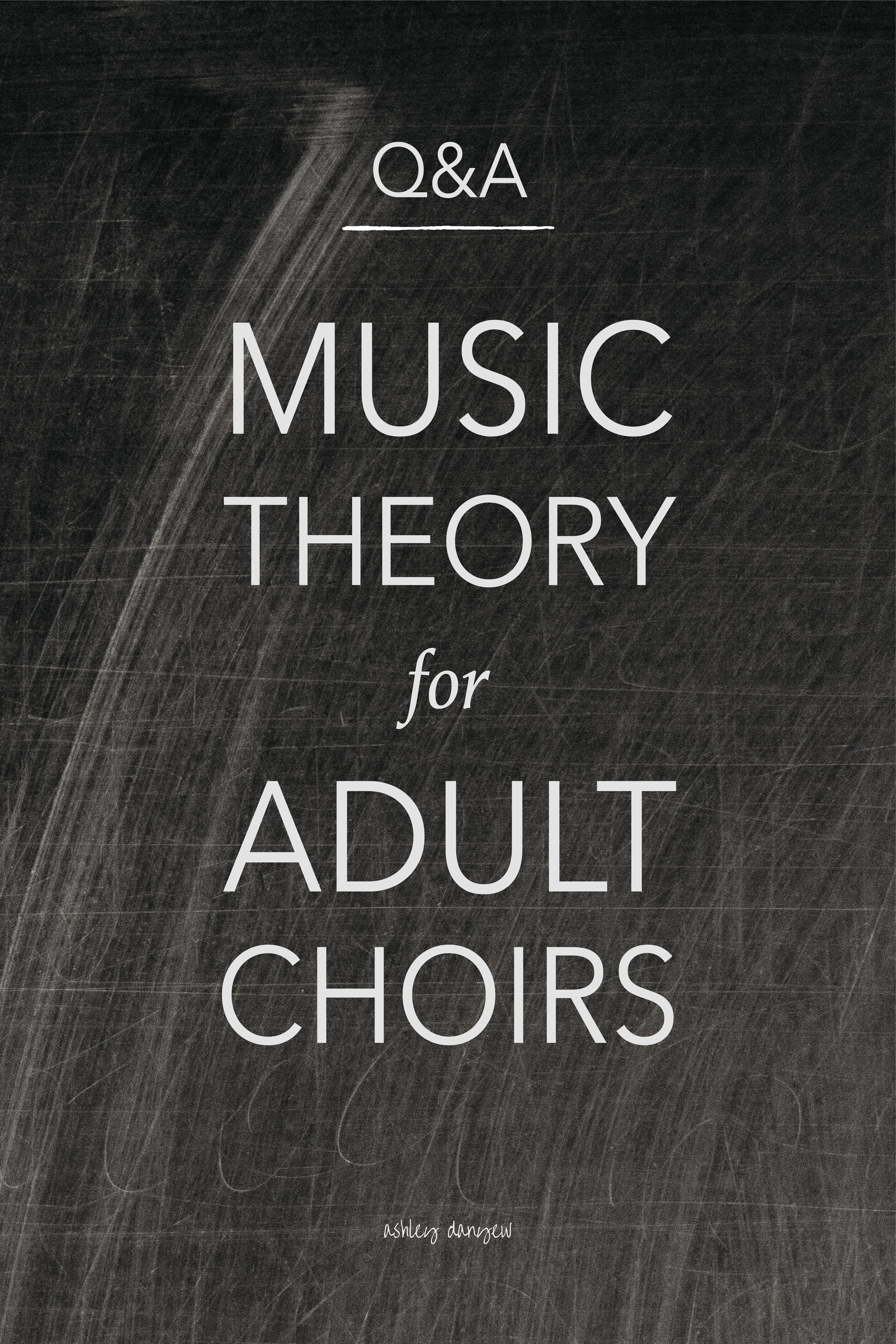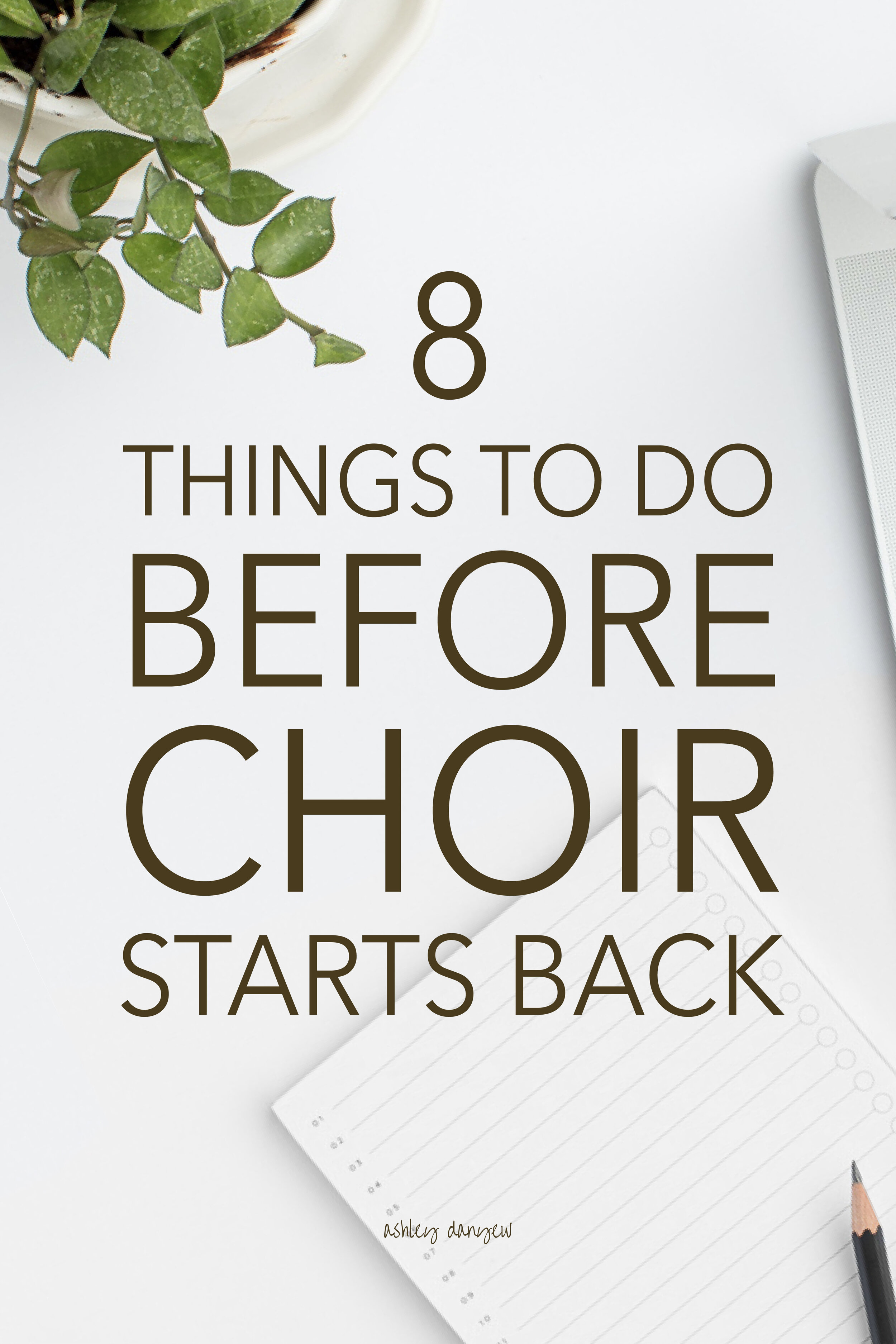It’s the most wonderful time of the year — back-to-school season, that is!
Even though I’m not a student anymore, as a teacher, I love the fresh-start feeling that comes with a new academic year (including new school supplies!).
And the same is true in church settings when choir and ensembles start back up.
But getting back into that weekly rehearsal routine after a long summer hiatus can be challenging, and making sure you’re prepared and ready for that first week back can be a daunting task, particularly if you procrastinated on some of those things on your summer to-do list:
Clean out choir folders and boxes
Sort and file music
Call piano tuner
Reorganize file cabinets
Order music for the fall
That’s why today, I’m sharing something special I’ve been working on to help you get ready for the new choir year and put your best foot forward.
I compiled some of my best articles and resources into a Back-to-Choir Guide to help you get organized, plan ahead, and teach with intention.
Whether this is your first or fiftieth year as a church music director, I hope this guide helps you feel confident, prepared, and excited for the year ahead!
Part 1: Get Organized
A to Z: Must-Haves for Your Choir Room and Rehearsals
Whether you’re working with an adult, youth, or children's choir or an instrumental ensemble, there are a few things every choir room (and rehearsal) should have. Here’s my must-have list, from A to Z.
Best-Kept Secrets of Choral Voicing
Choral voicing is a technique with long-standing history used by choral directors to seat singers based on characteristics of the voice - color, tone, timbre, placement, and vibrato.
Here’s how it works: Each voice has a unique series of overtones, which contributes to timbre. Having singers with like, complementary voices stand next to each other creates a natural unified sound that doesn't require them to compromise their vocal technique.
Did I mention it fosters the best intonation? It's a win-win, really. Here are some of the best-kept secrets of choral voicing.
10 Ways to Seat a Choir [Infographic]
There are lots of thoughts and opinions out there on choral seating formations: some swear by sopranos and altos in front with tenors and basses behind, others advocate for stacking sections (front-to-back), and others say mixed formations are the way to go.
The truth is, there's really no right or wrong way to do it, though you may find some formations work better for your group or for particular pieces you're singing.
Looking to mix it up? Here are ten different ways to seat a choir.
5 Things to Organize in a Church Music Program
There's something about crisp file folders, colored pens, pretty charts, and a few fun paper clips that makes me feel more confident, productive, and ready to get to work.
Not sure where to start? Here are five things to organize in your music program to help things run smoothly this year.
Back-to-Choir Tip #1
Start fresh by cleaning out all your choir folders, binders, and boxes. File all music, recycle any old bulletins and other pieces of paper. Sharpen pencils, wash handbell gloves and choir robes (if necessary), and restock post-it notes and highlighters, as needed.
Part 2: Enhance Your Worship Services
How to Create Your Own Doxology Transitions
A few years ago, I challenged myself to create a transition from the offertory to the doxology every Sunday.
It helped me grow as a musician and proved meaningful for congregation members and it became something I looked forward to as part of my planning and preparation for Sunday each week.
If you’ve ever been at a church where they did this, you know the power of seamlessly transitioning from one piece of music into another, especially if the transition incorporates melodic or rhythmic elements from one piece or the other.
Here are a few suggestions and real-life examples of how to create your own doxology transitions.
10 Creative Ways to Use Handbells in Worship
There are lots of creative, meaningful ways to include handbells in worship, beyond the traditional prelude or anthem slot. I mean, who said you have to have tables and foam and covers and special folders and notebook stands to play?
Break with tradition once in a while and you’ll find you can use handbells in a whole new way. Here are some of my favorite creative ideas for using handbells in worship.
Learn to lead and teach your choir with confidence.
Join me in a self-paced, 2-hour course (designed specifically for adult, handbell, and youth choir directors in church settings) and discover how people learn music, develop a practical teaching skillset + get a variety of practical tools and resources you can use in your ministry and teaching.
Part 3: Find Accessible Music Resources for Your Group
A Dozen Budget-Friendly Collections for the Small Handbell Choir
It’s no secret that handbell music can be quite costly, sometimes as high as $5 per copy. And if you’re a part-time director of a small handbell choir at a small church with a small budget, to match, you may be able to afford only 1-2 new pieces a year.
A practical solution? Handbell collections. Instead of buying music one piece at a time (at $4-$5 per copy), a collection gives you 3-10 pieces for a fraction of the cost.
Here are 12 budget-friendly collections you might consider.
Go-To Warm-Up Resources for Busy Choir Directors
Choral warm-ups are a practical way to prepare and introduce new musical skills and concepts before singing them in the context of a piece of music. This not only saves you time in rehearsal, but it also creates a more cohesive learning experience for your choir members.
The secret is thinking strategically about your warm-ups and being intentional about choosing exercises that are tailored to your group (and the skills you want to address) and the music you're working on.
Looking to up your warm-up game in the next few months? Here are a few curated choral warm-up resources I recommend, organized by age group.
15 Singing Games for Children’s Choir
Singing games are a great way to teach musical concepts, incorporate movement, and give children an opportunity to sing alone and with others. They're perfect for gathering activities, ice-breakers, or a quick change of pace in the middle of rehearsal.
Here are 15 singing games — some, more suitable for younger singers; others for older elementary; and even a few that your youth choir would love.
Most of these are sung in unison, without accompaniment. Also, since movement activities are difficult to describe in writing, I'm including video demonstrations where possible.
Choral Reading Session Picks
After reviewing hundreds of new choral releases from 8+ reading sessions (Chorister’s Guild, Morningstar, Hope, Lorenz, etc.), I compiled my favorites into a simple, readable guide that makes choosing new music for your choir a much easier (and less daunting) task.
See my recommendations for Adult Choir, Youth Choir, and Children’s Choir.
Part 4: Grow Your Music Program
How to Recruit New Choir Members This Fall
The beginning of a new choir year is a perfect time to invite and recruit a few new members. There are a few reasons for this:
People are often eager to sign up for new things at the beginning of a new church/school year
There’s energy and enthusiasm around new music, routines, and schedules
It’s a great way to engage new families that may have started visiting over the summer
Here are five tried-and-true approaches to recruiting new choir members.
How to Build Community in Your Choir
I believe the heart of ministry is community — a sense of connectedness, fellowship, and unity; shared responsibility, and ownership. If we aren't united in our mission and work together as a choir, what kind of ministry do we have?
Here’s my perspective and a few thoughts on building community in church choirs.
Back-to-Choir Tip #2
Set up a group email list for your choir or ensemble with best email addresses for all your choir members. This will make it easy to send communications through the year and ensure that no one is left off the list.
Part 5: Teach with Intention
The Church Choir’s Guide to Vowels, Part 1
In Part 1 of 2 of this guide, you’ll find everything you need (and ever wanted) to know about vowel production, vowel placement, tone, and diphthongs and triphthongs.
Read all the details about how to teach vowels to your choir here.
My Step-by-Step Process for Rehearsing a New Anthem
How can you teach something effectively and meaningfully in a short amount of time?
My recommendation? Start early. I recommend giving yourself plenty of time to introduce, rehearse, and polish an anthem before singing it in worship, so introduce it at least four weeks in advance.
P.S. Looking for more specific tips for directing a church choir? Take a look at this 2-hour mini course >>
How to Develop Children’s Singing Voices in Choir
All children start out being able to sing. But, if it’s not encouraged and nurtured from an early age, children can “forget how to sing.” How can you help them rediscover their singing voice?
Here are the ins and outs of developing children’s singing voices in a choir setting — from vocal exploration to developing choral musicianship.
6 Strategies for Helping a Child Discover Their Singing Voice
Church musician and educator Helen Kemp said 17% of children need help finding their singing voices. This does not indicate a lack of skill or potential, but simply a lack of experience and vocal development.
Tips for Working with Middle School Youth Choirs
As a youth choir director, you balance the responsibilities of building community, integrating service, sharing meaning, inspiring purpose, and fostering musical development.
But how do you approach musical growth and development for adolescent voices? What do you do when voices start to change? Here are a few helpful tips for working with 6th-8th grade singers.
P.S. Looking for more specific tips for directing a youth choir? Take a look at this 2-hour mini course >>
Part 6: Plan Your Time Well
How to Direct a Handbell Rehearsal
If you’re new to directing handbells, there are a few things you should know:
Handbell music notation is different (and more complex) than other music,
There’s often a greater emphasis on rhythm and counting, and
The ins and outs of assigning bells and keeping track of parts from piece to piece add another layer of preparation and planning to your plate as director.
Here’s what I’ve learned about directing handbell choirs and my process for running a rehearsal.
P.S. Looking for more specific tips for directing a handbell choir? Take a look at this 2-hour mini course >>
Making the Most of Your Weekly Choir Rehearsal: 7 Helpful Strategies to Save You Time
For many of you, rehearsal time is a prized commodity, as you likely see your group only once a week (not counting Sundays) for anywhere from 30-90 minutes (depending on the age of your singers 😉). Time is a constant struggle; you’ve got to make every minute of rehearsal count.
Looking for ideas and a few helpful strategies? Here are a few things you can do to make the most of the time you have in your weekly rehearsals.
How to Plan an Awesome Choir Kick-Off Party
Who doesn't love a Christmas party in September?! A Christmas choir party is a great way to kick off the new choir year, welcome new members, and build community, and a fun way to create some hype around whatever you have planned for Christmas.
Ready to start planning? Here are a few ideas for your next Christmas Choir Kick-Off Party.
Back-to-Choir Tip #3
Look ahead at the calendar (at least through Christmas) and make note of special Sundays or services and any extra rehearsals you want to schedule. Provide a list of dates to your choir or ensemble members the first week so they can put those things on their calendars and plan for them.
I hope this guide helps you step into the new choir year with confidence, ready to do your best work.
I’d love to hear from you:
How do you prepare for the new choir year?







































